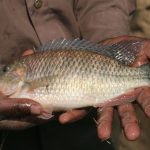On 2 December 2025, stakeholders from government, private sector, development partners, and research institutions convened in Lilongwe for a results dissemination event on the potential of anchor enterprise models to accelerate rural and agricultural transformation in Malawi. The event, organized by IFPRI with financial support from the Embassy of Ireland, featured a presentation of research […]
Kasungu Secondary City and Special Economic Zone Development
11 November 2025 Malawi’s ambition to accelerate industrialization and inclusive growth took center stage at a recent workshop focused on Kasungu secondary City’s potential of becoming a strategic hub for agro-processing and regional trade. With the SEZ Act of 2024 paving the way for urban centers to drive investment and innovation, the workshop aimed to […]
Using Organic Wastes to Tackle Deforestation and Improve Fish Quality
21 October 2025 Stakeholders from government, research institutions, NGOs, and donor agencies gathered at Ufulu Gardens in Lilongwe for the dissemination of a groundbreaking study on the use of organic waste to reduce deforestation and improve the quality of smoked fish products. The study, conducted by WorldFish under the EU-funded DeSIRA project, offers promising solutions […]
Asking the right questions: A stakeholder dialogue on generative AI in digital extension
Generative artificial intelligence (gen AI) is gaining traction in agriculture. Conversational agents such as chatbots and voice assistants are being explored as digital extension solutions, promising scalable, personalized advice for farmers that can supplement and support the work of human extension agents. Yet designing and deploying such AI tools presents many challenges.
From participation to power: Advancing women’s leadership in rural development
The International Day of Rural Women (October 15) highlights the essential roles that rural women play in sustaining households, managing natural resources, and contributing to rural economies. Yet even as they participate extensively in agriculture and local organizations, women’s ability to influence the policies and institutions that shape their lives often remains limited.
- 1
- 2
- 3
- …
- 23
- Next Page »





